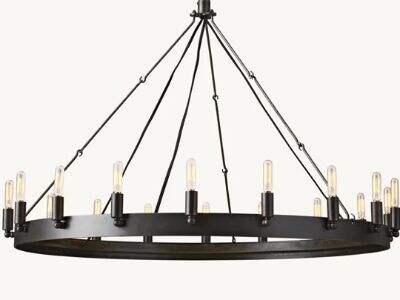Učinci kuta ruke na rasvjetu lustera
Prostorija može dobiti dosta elegancije i ljepote dodatkom lustera. No, je li vam palo na pamet kako oblik i kut ruku lustera utječu na raspodjelu svjetlosti? Kut i oblik ruku vrlo su važni za refleksiju svjetlosti i stoga su važna razmatranja pri odabiru lustera koji će odgovarati vašem prostoru.
Kut ruke vs. raspršenost svjetlosti
Lom svjetlosti u lusteru uvelike ovisi o kutu ruku. Ravnim, ravno izbočenim rukama svjetlost bi bila usmjerena točno prema dolje, stvarajući efekt reflektora. Naprotiv, luster s rukama podignutim prema gore reflektirat će svjetlost u raznim smjerovima, time je mekše i šire raspodijeljena, ispunjavajući prostor nježnom atmosferom.
Kako kut ruke određuje rasprostiranje svjetlosti
Smjer svjetlosti koja se emitira određuje kut ruku. Ruke postavljene pod kutom reflektiraju svjetlost prema stropu i stvaraju topli ambientalni učinak tako što reflektiraju svjetlost neizravno. S druge strane, više vodoravne ručke usmjeravaju svjetlost prema dolje, pa su prikladne za zadatak osvjetljenja ili naglašavanje određenih objekata u prostoriji.
Znanost iza kuta ruku i refleksije svjetlosti
Svjetlost koju emitira lust regulirana je principima refleksije i loma. Kada svjetlost udari u površinu ruke, kut pod kojim udara određuje način i smjer refleksije. Svjetlosni učinak i raspoloženje mogu se postići kritičkim pozicioniranjem ruku pod određenim kutovima. Ova interakcija vam može pomoći da napravite pravi odabir lustova za osvjetljenje razumijevanjem ovog procesa.
Postizanje idealnog osvjetljenja i ambijenta kroz pozicioniranje ruku
Zaključno, kut ručki kandiljera znatno utječe na način raspršivanja svjetlosti u prostoriji. Kada saznate više o ulozi kuta ručki, moći ćete pronaći kandiljer koji neće samo dodati dekoraciji, već će vam također osigurati udobnu i prijatnu svjetlost u najprikladnijem trenutku i prostoru.




 EN
EN
 AR
AR
 BG
BG
 HR
HR
 NL
NL
 FI
FI
 FR
FR
 DE
DE
 EL
EL
 HI
HI
 IT
IT
 JA
JA
 KO
KO
 NO
NO
 PL
PL
 PT
PT
 RO
RO
 RU
RU
 ES
ES
 SV
SV
 TL
TL
 ID
ID
 SL
SL
 UK
UK
 VI
VI
 GL
GL
 HU
HU
 TH
TH
 TR
TR
 MS
MS
 GA
GA
 CY
CY
 EO
EO
 LA
LA
 MN
MN
 NE
NE
 SO
SO
 UZ
UZ
 HAW
HAW
 LB
LB
